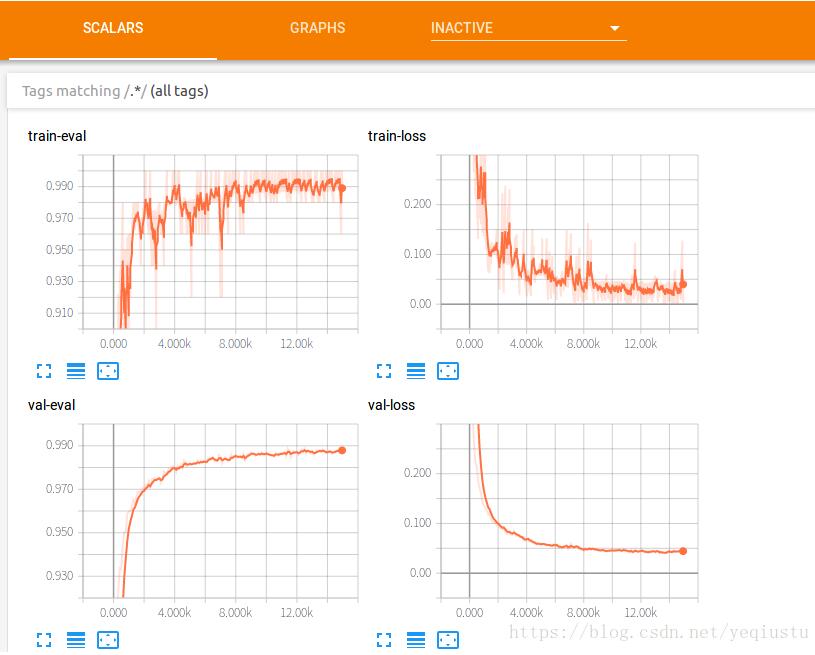python使用KNN算法手写体识别
本文实例为大家分享了用KNN算法手写体识别的具体代码,供大家参考,具体内容如下
#!/usr/bin/python
#coding:utf-8
import numpy as np
import operator
import matplotlib
import matplotlib.pyplot as plt
import os
'''''
KNN算法
1. 计算已知类别数据集中的每个点依次执行与当前点的距离。
2. 按照距离递增排序。
3. 选取与当前点距离最小的k个点
4. 确定前k个点所在类别的出现频率
5. 返回前k个点出现频率最高的类别作为当前点的预测分类
'''
'''''
inX为要分类的向量
dataSet为训练样本
labels为标签向量
k为最近邻的个数
'''
def classify0(inX , dataSet , labels , k):
dataSetSize = dataSet.shape[0]#dataSetSize为训练样本的个数
diffMat = np.tile(inX , (dataSetSize , 1)) - dataSet#将inX扩展为dataSetSize行,1列
sqDiffMat = diffMat**2
sqDistances = sqDiffMat.sum(axis=1)
distances = sqDistances**0.5
sortedDistIndicies = distances.argsort()#返回的是元素从小到大排序后,该元素原来的索引值的序列
classCount = {}
for i in range(k):
voteIlabel = labels[sortedDistIndicies[i]]#voteIlabel为类别
classCount[voteIlabel] = classCount.get(voteIlabel,0)+1#如果之前这个voteIlabel是有的,那么就返回字典里这个voteIlabel里的值,如果没有就返回0
sortedClassCount = sorted(classCount.iteritems(),key=operator.itemgetter(1),reverse=True)#key=operator.itemgetter(1)的意思是按照字典里的第一个排序,{A:1,B:2},要按照第1个(AB是第0个),即‘1'‘2'排序。reverse=True是降序排序
print sortedClassCount
return sortedClassCount[0][0]
'''''
将图像转换为1*1024的向量
'''
def img2vector(filename):
returnVect = np.zeros((1,1024))
fr = open(filename)
for i in range(32):
line = fr.readline()
for j in range(32):
returnVect[0,i*32+j] = int(line[j] )
return returnVect
'''''
手写体识别系统测试
'''
def handwritingClassTest(trainFilePath,testFilePath):
hwLabels = []
trainingFileList = os.listdir(trainFilePath)
m=len(trainingFileList)
trainSet = np.zeros((m,1024))
for i in range(m):
filename = trainingFileList[i]
classNum = filename.split('.')[0]
classNum = int(classNum.split('_')[0])
hwLabels.append(classNum)
trainSet[i] = img2vector( os.path.join(trainFilePath,filename) )
testFileList = os.listdir(testFilePath)
errorCount = 0
mTest = len(testFileList)
for i in range(mTest):
filename = trainingFileList[i]
classNum = filename.split('.')[0]
classNum = int(classNum.split('_')[0])
vectorUnderTest = img2vector(os.path.join(trainFilePath, filename))
classifyNum = classify0(vectorUnderTest,trainSet,hwLabels,10)
print "the classifier came back with : %d , the real answer is : %d"% (classifyNum , classNum)
if(classifyNum != classNum) : errorCount+=1
print ("\nthe total number of error is : %d"%errorCount)
print ("\nthe error rate is : %f"%(float(errorCount)/mTest))
handwritingClassTest()
以上就是本文的全部内容,希望对大家的学习有所帮助,也希望大家多多支持【听图阁-专注于Python设计】。
